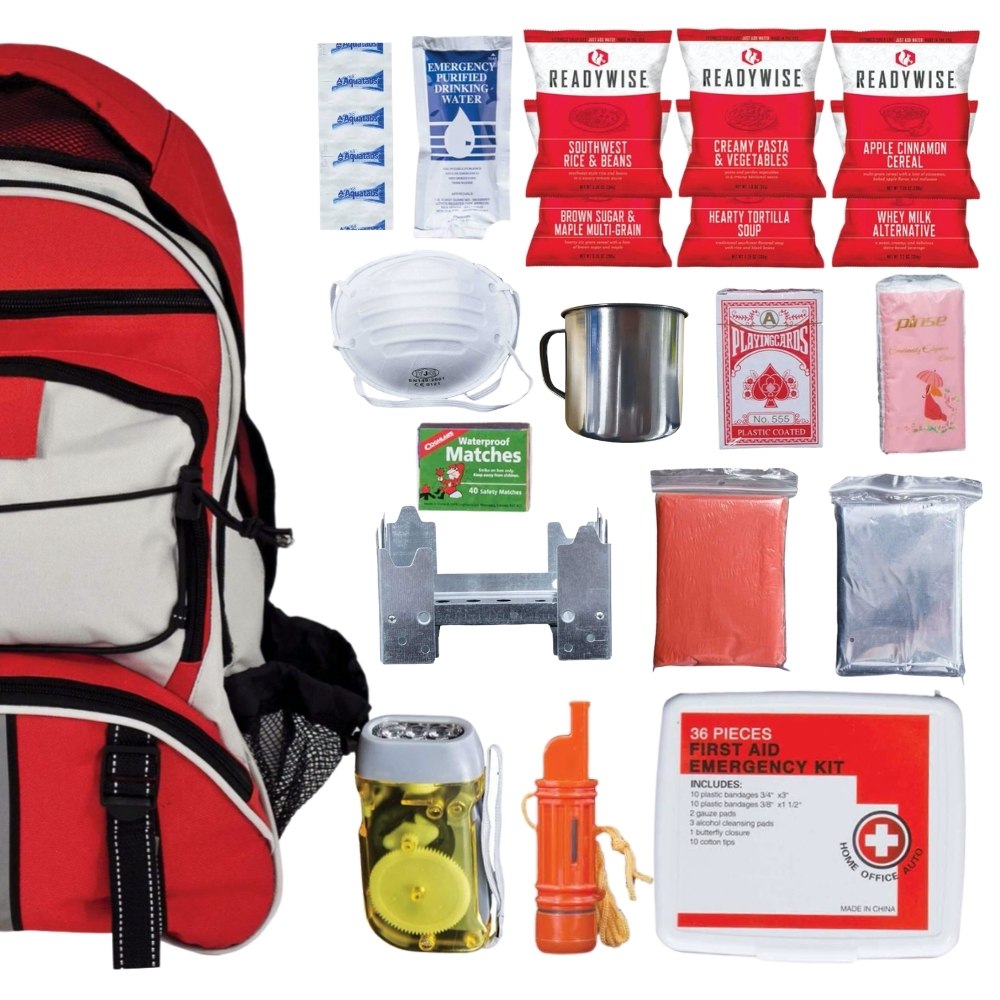Your Ultimate Emergency Preparedness Resource: Remain Informed, Stay Safe
Your Ultimate Emergency Preparedness Resource: Remain Informed, Stay Safe
Blog Article
Crucial Emergency Situation Readiness Tips for Survival
From setting up a fully equipped emergency situation kit to developing clear interaction channels and discharge courses, there are numerous important actions that can make a considerable difference in the face of adversity. By proactively resolving these key facets of emergency preparedness, you can significantly boost your chances of survival in tough situations (EMERGENCY PREPAREDNESS).
Building an Emergency Situation Package

Start by including non-perishable food items like canned goods, granola bars, and dried fruits that have a long life span and do not require cooking. Keep in mind to load a handbook can opener. Furthermore, shop at least one gallon of water per person each day for a minimum of three days in durable containers.
Fundamental emergency treatment supplies are crucial. Include items such as adhesive tapes, disinfectant wipes, painkiller, and any necessary prescription drugs. A flashlight with added batteries, a multi-tool, and a whistle must likewise be in your package. Maintain duplicates of essential documents like recognition papers, insurance plans, and emergency situation contact details in a water resistant container. By putting together a well-thought-out emergency situation kit, you can much better prepare yourself for unexpected occasions and enhance your opportunities of remaining safe throughout a crisis.
Creating a Communication Plan
Assembling an emergency kit with essential products establishes a solid foundation for readiness; currently, turning to the growth of an interaction plan is critical for ensuring reliable sychronisation and information circulation during times of situation. A well-thought-out communication strategy is important for keeping people informed, linked, and risk-free in emergency situation circumstances. Utilize numerous communication approaches such as message messages, phone calls, social media, and emergency situation alert systems to make certain info gets to every person immediately.

Establishing Discharge Routes
To ensure efficient emergency situation reaction and precaution, establishing clear evacuation courses is critical in readiness preparation. Evacuation paths must be determined and communicated to all individuals in an offered location to guarantee a swift and organized discharge in times of crisis. When developing discharge courses, it is vital to think about numerous choices to account for various scenarios, such as fires, floodings, or other emergencies that might obstruct key escape paths.
The selected discharge courses should lead to assigned secure areas where individuals can seek shelter and await further guidelines or help (you can try these out). These routes need to be well-marked and conveniently available, taking right into account the needs of all people, consisting of those with handicaps or wheelchair limitations. Routine drills and technique runs along these evacuation routes can assist acquaint people with the getaway courses and ensure a more effective discharge process throughout real emergencies
In addition to physical emptying courses, it is essential to have alternate interaction methods in position to relay discharge instructions and updates efficiently. By establishing and consistently reviewing evacuation paths, neighborhoods can boost their total emergency situation readiness and response abilities.
Understanding Basic Emergency Treatment
One basic facet of emergency situation preparedness is obtaining understanding in standard emergency treatment procedures. In times of situation or calamity, being able to supply instant medical assistance can make a significant distinction in conserving lives. Knowing fundamental very first aid equips people with the abilities to evaluate and respond to clinical emergencies and usual injuries successfully.
Standard emergency treatment training typically covers essential methods such as CPR, injury care, bandaging, splinting, and identifying signs of shock or respiratory system distress. websites. Understanding how to administer these basic treatments appropriately can maintain an individual's problem up until specialist medical help gets here
In addition, having a standard emergency treatment set conveniently offered is vital in emergency situation circumstances. The kit should consist of crucial materials like bandages, antiseptic wipes, gauze pads, glue tape, tweezers, handwear covers, and scissors. Recognizing exactly how to utilize these things appropriately can avoid infections, stop hemorrhaging, and provide convenience to those in requirement.
Securing Crucial Documents

Conclusion
To conclude, being gotten ready for emergencies is crucial for survival. Developing an emergency situation set, creating an interaction plan, developing evacuation courses, learning standard emergency treatment, and protecting important papers are important actions to take. By being proactive and taking these actions, individuals can increase their opportunities of staying risk-free and having the ability to navigate via unexpected scenarios properly. It is essential to focus on emergency situation preparedness to ensure readiness for any type of possible dilemmas that may develop. EMERGENCY PREPAREDNESS.
From setting up a well-equipped emergency set to establishing clear interaction networks and discharge paths, there are a number of critical actions that can make a substantial difference in the face of adversity.To ensure efficient emergency reaction and security procedures, developing clear evacuation routes is critical in readiness planning. When establishing emptying paths, it is vital to consider multiple options to account for different scenarios, such as fires, floodings, or various other emergency situations that might block primary getaway routes.
Regular drills and practice runs along these evacuation courses can aid acquaint people with the escape paths and ensure a more reliable discharge procedure during actual emergency situations.
Developing an emergency kit, developing an interaction strategy, establishing discharge courses, discovering standard initial aid, and securing vital papers are crucial steps to take.
Report this page